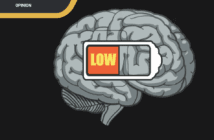Compiled by Salma Mgandi Chizi
Introduction
In a society where most work is becoming computer-based, school work cannot forever resist change. Computer technology and electronic networks have slowly been infiltrating schools. Because of the widespread and growing use of such technology in both the home and the workplace ,computer equipment is unlikely to end up in closets or even to sit idle most of the time. Hence, for both students and teachers, there is a kind of “authenticity” associated with using this equipment; for students, the technology represents the future.
Today more than ever before, the world faces competition in all sectors as a result of the advent of a knowledge based economy. Governments in all parts of the world are striving to achieve access and good quality education for their citizens. For this reason, ICT in education is seen as a means of increasing access to education especially to the rural population and making teaching and learning enjoyable.
Different studies have supported the use of ICT in education as an enabler in the process of teaching and learning by assisting the learners to grasp concepts that would otherwise have remained abstract. Other scholars contend that the use of ICT in education has little benefit because they are merely delivery mechanisms relying on the teacher’s pedagogical abilities. Amid these debates, policymakers have continued to lay foundations for the use of ICT to profit from the perceived benefits.
In the wake of technology driven education
When a technological innovation – be it the book, the automobile, or television – becomes widely available,
its ramifications spread throughout the society, and that includes education. The impact of television and video technology on education is already evident in the decline of the print culture and the rise of a visual culture, in shorter attention spans, and in a loss of innocence among children. Similarly, the computer and the electronic network are likely to have significant effects on education,and it behooves us to considerwhat those effects might be as we think about the issue of restructuring schools. Computer technology can be used in the classroom in three ways.
They can be used as;
1) tools such as word processors, spreadsheets, programming languages, and electronic network systems;
2) integrated learning systems that present exercises for students to work on individually and that keep
records of student progress for reporting to the teacher; and
3) simulations and games that engage students in computer-based activities designed to be motivating and
educational.
It is obviously difficult to anticipate all the effects of computer technologies, and it may well be that I will overlook some of the most important ones. But researchers have begun to observe the impact of these new technologies on schools, so we can at least make some informed speculations. There are a minimum of eight major trends that can be identified from the literature and from observations in schools that have
adopted computers in Kenya.
1. A shift from whole-class to small group instruction
When teachers use computers, one or two students are normally assigned to each computer. Teachers do not find it feasible to maintain all the students in lockstep, and so they move to an individualized model of teaching. This shift means that teachers begin to talk to individual students and to develop an idea of how much students understand and what their confusions are. Usually teachers have an inflated idea of how much their students understand, so watching individual students’ struggle with problems may give teachers a more realistic picture of their students. The use of computers also means that students are more likely to go at their own pace – and often in their own direction – which can create problems of control for teachers.
2. A shift from lecture and recitation to coaching.
As part of the shift from whole-class to individualized instruction, there is a shift from didactic approaches
to a constructivist approach. The introduction of a third party, the computer, into the situation encourages
the teacher to play the role of a coach, in much the same way that a piano encourages the teacher to play the role of a coach in a piano lesson. Much of the learning is meant to take place between the student and the computer, so the teacher becomes an observer and a guide who ensures that those interactions are beneficial to the students’ learning.
3. A shift from working with better students to working with weaker students
In whole-class instruction, teachers carry on a dialogue with their better students. This is because it is the better students who raise their hands to offer ideas.Teachers do not like to call on weakerstudents because they do not want to “embarrass them in front of the class.” In a classroom in which students are working on computers, the teacher is naturally drawn to students who need help, and those students are generally the weaker ones.
4. A shift toward more engaged students
In settings in which computers have been put at the disposal of students as part of some long-term activity or project, researchers have reported dramatic increases in students’ engagement. It may be that the reported increases in engagement are due to the novelty of the computer, but it is unlikely that this factor
accounts for the entire increase. To the degree that the computer supports long-term effort rather than short exercises, there is suggestive evidence from these studies that students become invested in the activities they carry out on computers.
5. A shift from assessment based on test performance to assessment based on products, progress, and effort
Assessment in most classes is based on students’ performance on tests that are given after different sections of the curriculum have been completed. The introduction of computer technology and the shift to individualized instruction move assessment away from the classroom test, which seems inappropriate to teachers under the circumstances.
Thus the teacher moved toward assessing students in terms of the effort and progress they made. When the teacher sets up a project-based curriculum, evaluation of students tends to be based on the products that emerge from their efforts. But for the present this creates problems for many teachers, because they do not know how to assess such products objectively. This problem has been solved for writing assessment in terms of holistic and primary trait scoring methods, and clearly some such scheme is needed for project-based work.
The use of computers also means that students are more likely to go at their own pace – and often in their own direction – which can create problems of control for teachers.
6. A shift from a competitive to a cooperative social structure
In the normal classroom, students work individually and compete against one another for grades, except when students drop out of the competition because of social pressures or repeated failure. A number of researchers have found a shift toward a more cooperative social structure in classrooms in which a network provides a common database for students.
7. A shift from all students learning the same things to different students learning different things.
An underlying assumption of the education system is that every student must acquire certain basic knowledge and skills. This assumption leads to failing students who haven’t mastered parts of the curriculum and directing students’ efforts toward their weaknesses rather than their strengths. Electronic networks and shared databases foster a different view of knowledge in which expertise is spread among different participants and brought together in a common space.Because of the trends toward individualized education, there is likely to be a secondary trend toward breaking the lockstep pattern of everyone learning the same thing in the same way at the same time.
8. A shift from the primacy of verbal thinking to the integration of visual and verbal thinking.
The visual media – television, film, and computers – have begun to bring about a new kind of visual thinking, and a number of educators are exploring how to use visual media to enhance learning. Computers and electronic networks potentially provide instant access to the world’s accumulated knowledge, in both verbal and visual forms. This development may slowly undermine the primacy of the book, the lecture, and their accouterments, such as the multiple-choice test and the recitation class.
Computers and electronic networks potentially provide instant access to the world’s accumulated knowledge, in both verbal and visual forms. This development may slowly undermine the primacy of the book, the lecture, and their accouterments, such as the multiple-choice test and the recitation class.
Conclusion
Since many aspects of work are changing to incorporate computers, the nature of schoolwork will make a parallel change.This means that computers will be seen as necessary for students and teachers.But other more powerful uses for educational purposes will develop more slowly as computers becomecommonplace in schools and homes. All these uses of computers tend to subvert the prevailing, didactic view of education
that holds sway in our society. Using them entails active learning, and this change will eventually foster a shift in society’s beliefs in a more constructivist view of education.
Chizi is a Trained Teacher & Educational Manager
E-Mail: [email protected]




